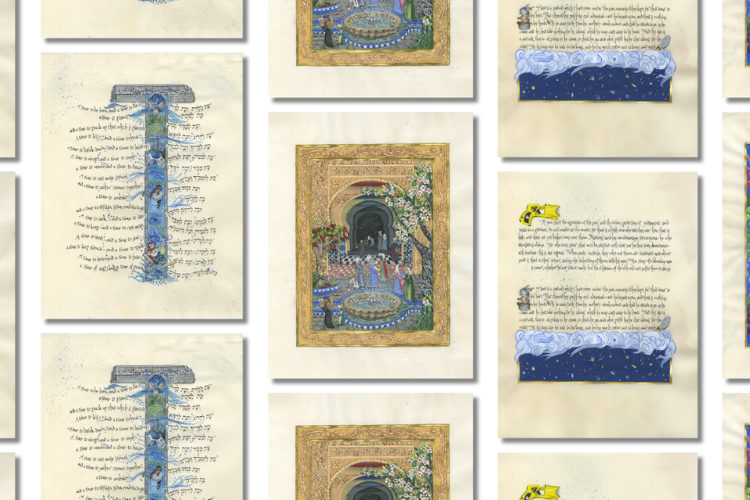
A Modern Illuminated Manuscript
From Pete Seeger’s song Turn! Turn! Turn! and Edith Wharton’s title for her novel The House of Mirth, to “vanity, vanity all is vanity” and “the sun also rises,” the words of Qohelot (The Book of Ecclesiastes) endure as a source of wisdom and inspiration. This text reverberates across the centuries and cultures of Western civilization, from ancient Israel to today. Wrestling with the meaning of life, Qohelet ponders both the beauty and transience of human life and accomplishments.
Artist Debra Band has produced the first-ever fully illustrated Qohelet, inaugurated at the Heller Museum at Hebrew Union College in New York this fall and now on view at the Duke University Divinity School. She imagines Qohelet’s teachings by depicting the grandest of medieval palaces, the Alhambra in Granada, Spain, as the central visual metaphor, populating its halls and gardens with surprising and exquisite imagery, symbolism, and related poetry. She employs the richness and deep Jewish tradition of an illuminated manuscript with intricate calligraphy, micrography, and painting in ink, gouache, gold, and palladium on vellum.
Qohelet is ascribed to the elderly King Solomon, but its late biblical language may indicate a later authorship. Band collaborates with philosopher Menachem Fisch to offer a groundbreaking philosophical and artistic interpretation of Qohelet that restores the literal meaning of vapor to Qohelet’s key Hebrew word hevel, traditionally translated metaphorically as vanity or futility, to signal the ephemeral nature of our time “under the sun.” Her vivid images embedded within the Hebrew and English texts reveal Qohelet’s search for serenity and a meaningful life.
The following paintings are published in Band’s new book with Fisch, Qohelet: Searching for a Life Worth Living (Baylor University Press, 2023),
Frontispiece
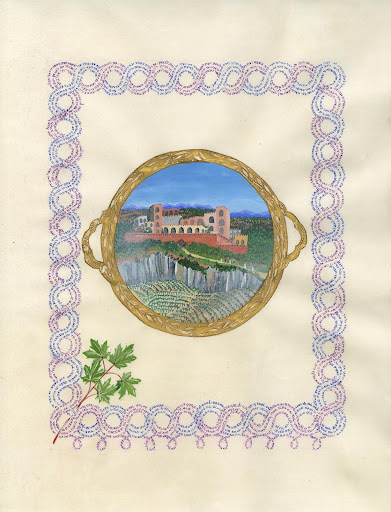
In a golden bowl, which Qohelet later compares to human life, floats a vision of a royal castle modeled on the Alhambra, the center of the vibrant Muslim and Jewish court life of medieval Sepharad. Mist, symbolizing humankind’s dreams and illusions of immortality, obscures the view of the castle, orchards, vineyards, and fields. The fresh green branch reminds us of both the joy and brevity of life, while ribbons of micrography of the Qohelet text frame the scene.
Qohelet 2:4-6
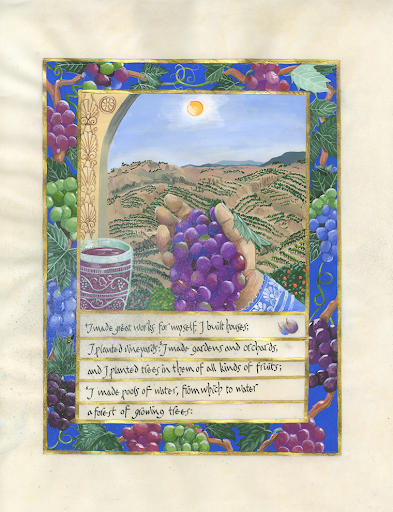
The hand holding its lush bunch of grapes, the goblet full of wine, and fertile orchards present a meditation on the futile attempt to find lasting meaning in life by immersing oneself in luxury.
Qohelet 3:2-8
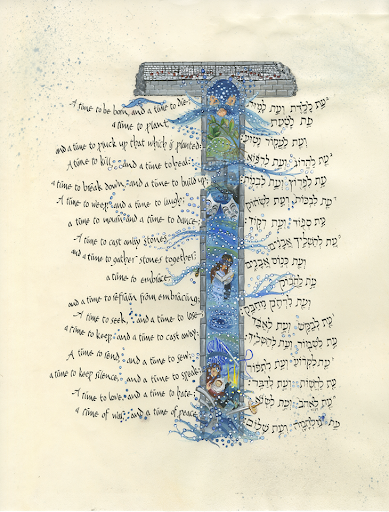
Qohelet sees life as a river, its origin unknowable, its endpoint obscure, each moment subject to changes that cannot be anticipated. The wall through which the stream emerges is capped by a mosaic bearing a fragment of the musical notation from Pete Seeger’s famous 1965 song setting of the poem, Turn! Turn! Turn!
Qohelet 5:7-16
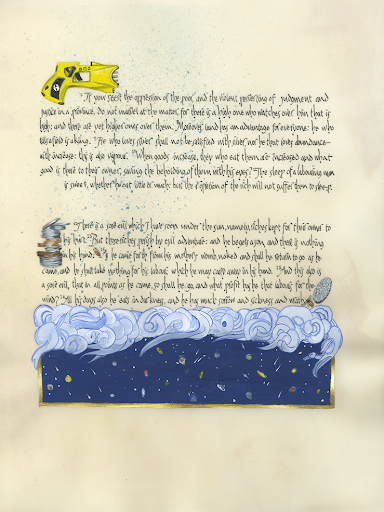
The yellow taser presently used and abused by police forces illustrates text that considers that neither power nor wealth guarantees wisdom or reliable joy as securely as careful ethical behavior.
Qohelet 5:17-19
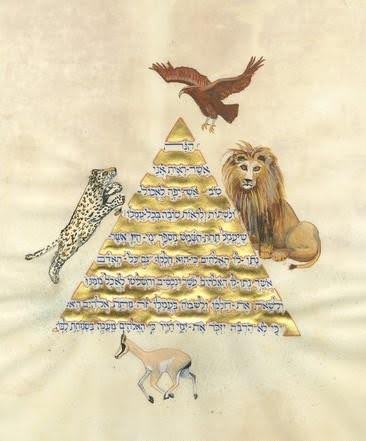
Qohelet offers the assurance that God wants humankind to live happily, taking pleasure in work and its fruits. The golden triangle, signifying the Greek letter delta, represents the mathematical concept of change intrinsic to life. The animals allude to the Talmudic ethical tract, Pirke Avot, Ethics of the Fathers: “Be bold as a leopard, as light as an eagle, as swift as a gazelle, and as brave as a lion to do the will of your Father in heaven.”
Qohelet 12:1-8
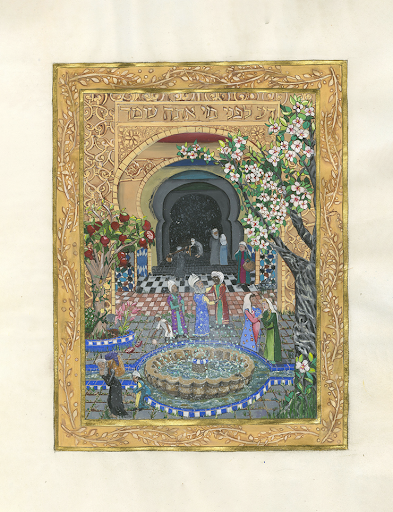
Qohelet 12:1-8
“Know before whom you stand” crowns the portal to this palace, warning of the inevitability of divine judgment. A fragile, elderly laborer lugs a basket of grapes destined for a rich table, pregnant women celebrate one another’s joy, a child bounces a ball across the pavement, aristocrats chat, and an old man hobbles into the inescapable misty depths of the dark archway. The courtyard fountain sprays and leaks water, symbolizing its own sustenance and that of Torah, essential to human life. Weeds have invaded the courtyard tiles, evoking the biblical text that sinners will vanish like dry grass, and the intricate mosaics have begun to crumble. The pomegranate tree evokes fertility and its seeds symbolize the 613 commandments. The almond tree’s fragrant white blossoms offer a metaphor for the white hair of old age. Nothing in the palace of human existence – even in this grandest of palaces – lasts forever. God alone is eternal.



